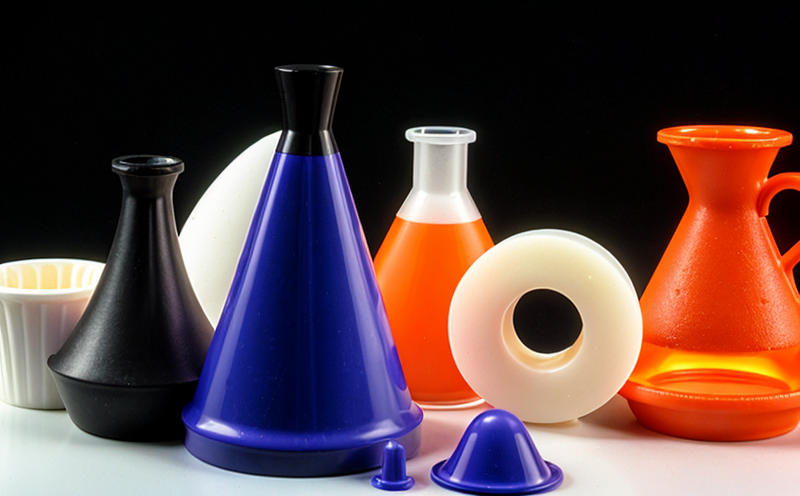DIN EN ISO 75 Heat Deflection Temperature Testing in Plastics
The DIN EN ISO 75 heat deflection temperature (HDT) test is a critical procedure for evaluating the thermal performance of plastics. This test measures how much force it takes to cause a specimen of plastic to bend until it yields, providing valuable insights into material properties such as rigidity and durability under heat stress.
The HDT test is particularly important in sectors like automotive manufacturing, where materials must withstand high temperatures without deforming or failing. In this context, understanding the HDT value helps ensure that parts will perform reliably over their service life. The standard applies to thermoplastics and thermosetting plastics used in various applications.
The test involves placing a specimen of plastic between two supports on a heated stage and applying increasing force until the specimen deflects by a specified angle. The temperature at which this occurs is recorded as the heat deflection temperature. This value indicates the material’s resistance to bending under load, providing a useful benchmark for quality control and product design.
The DIN EN ISO 75 standard ensures consistency in testing procedures across different laboratories worldwide, facilitating easier comparability of results. Compliance with this standard is essential for manufacturers aiming to meet international regulatory requirements and ensure product safety and reliability.
For accurate HDT testing, the specimen preparation is crucial. The material must be carefully cut into a specific geometry (typically 25 mm × 100 mm × 3 mm) to ensure uniformity and repeatability of results. Specimen orientation also plays a key role; for instance, in automotive parts where surface finish can affect performance.
Understanding the HDT test is important not only for quality assurance but also for optimizing material selection during product development. Engineers use this information to predict how materials will behave under real-world conditions, such as engine compartment temperatures or prolonged exposure to heat sources. This knowledge helps in designing parts that are both functional and safe.
Compliance with DIN EN ISO 75 is especially important for industries subject to strict regulatory requirements. For example, automotive manufacturers must demonstrate that their components meet specified HDT values to ensure they can withstand the harsh operating conditions found in vehicles. The standard also plays a role in ensuring product safety and reliability across various sectors.
Given its significance in quality assurance and compliance, it is essential for professionals involved in material testing and product development to be familiar with the DIN EN ISO 75 HDT test. This knowledge allows them to make informed decisions about material selection, optimize design parameters, and ensure that their products meet stringent performance expectations.
Scope and Methodology
| Parameter | Description |
|---|---|
| Test Specimen Dimensions | 25 mm × 100 mm × 3 mm (typical) |
| Temperature Range | Start at room temperature and increase by 18°C/min until deflection occurs |
| Deflection Angle | 0.4 mm (standard) |
| Load | 2,500 N or 5,000 N depending on specimen thickness |
Benefits
- Ensures consistent material performance across different environments and applications.
- Aids in optimizing product design for better thermal stability.
- Promotes compliance with international standards, enhancing global market entry.
- Improves quality control by identifying weak materials early in the production process.
- Supports regulatory compliance and safety certifications.
- Facilitates easier comparison of results across different laboratories and tests.
- Aids in selecting appropriate materials for specific applications, enhancing product longevity.
Customer Impact and Satisfaction
The DIN EN ISO 75 HDT test directly impacts customer satisfaction by ensuring that products meet the highest quality standards. By providing accurate data on material performance, this testing helps manufacturers deliver reliable and durable products. This not only enhances brand reputation but also builds trust with customers.
For industries where product failure could result in significant financial losses or safety hazards, such as automotive manufacturing, compliance with DIN EN ISO 75 is crucial. It ensures that parts meet stringent performance expectations, thereby reducing the risk of recalls and ensuring customer satisfaction.
The test also supports regulatory compliance, which is essential for international market entry. By meeting these standards, manufacturers can enter new markets with confidence, knowing they are adhering to globally recognized benchmarks. This not only opens up new sales opportunities but also enhances overall business performance.





